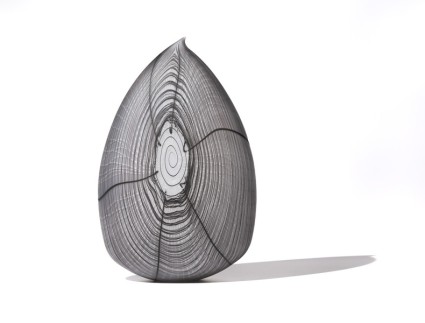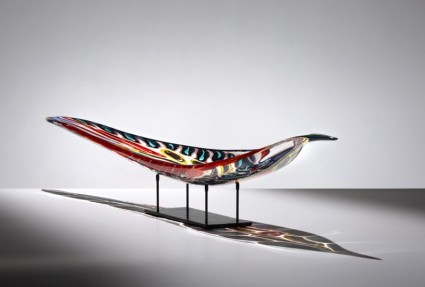by Kenn Holsten
The studio glass movement, as we know it, is less than 50 years old. Before that time, almost all glass art was blown in factories. In the mid-1960’s Dominick Labino and Harvey Littleton co-created the first small glass hot shop; Littleton began the glass program at the University of Wisconsin-Madison; his students such as Marvin Lipofsky and Dale Chihuly got degrees in glass and then went on to establish glass programs at colleges on both coasts and the rest is history.
But where is that history headed now? Countless times I have been asked by actual or potential collectors of contemporary glass art: What is the future of contemporary glass? Will it continue to expand? Will values continue to increase? Who is the next Chihuly (substitute Lino Tagliapietra, Morris, etc.)?
I think it is fairly safe to state that contemporary glass is no longer in its infancy. One very significant fact is that most people now think of glass making as an art form, not just a craft. In the 1980’s and even 1990’s there was a constant questioning as to whether glass should be considered a craft or an art. The fact that most of the better known glass artists are in dozens of major art museums and that the very best known glass artists (Chihuly, Tagliapietra, Morris) have each had numerous major exhibitions at these museums is enough evidence to put that question to rest.
Since nothing lasts forever, it is also safe to say that the current excitement, vitality and expansiveness surrounding contemporary glass will probably at some point in history begin to wane. The question then is whether that point in time will be in the next few decades, a hundred years from now or much further into the future. Only time will bring a clear answer to this question. And yet it is interesting and even perhaps essential to continue to explore this ongoing questions as to the true importance of contemporary glass and how artists such as Chihuly and Lino Tagliapietra will be viewed a hundred or two hundred years from now.
One of the most positive indications of the robust health of contemporary glass is the fact that many so-called fine art galleries have added one or more glass artists in recent years. I happen to live in Santa Fe and have observed in my 20 years here an incredible growth in the number of top galleries featuring glass art as well as paintings and other types of sculpture. Twenty years ago only two or three galleries in Santa Fe featured glass art. At this point, nearly every major art gallery in Santa Fe (and there are many) shows at least one glass artist and most of them show several.
Other positive indicators of the growth and stability of glass art are the increasing number of glass programs at colleges and universities and also the huge growth in the number of collectors of contemporary glass in the past 15-20 years.
Taking all of this into consideration, if I were to hazard a guess as to where we are today with respect to the rise and fall of the importance of contemporary glass art, I would have to say that we are well beyond the early stages but still much closer to the beginnings than to any signs of decline.
Copyright 2010.


